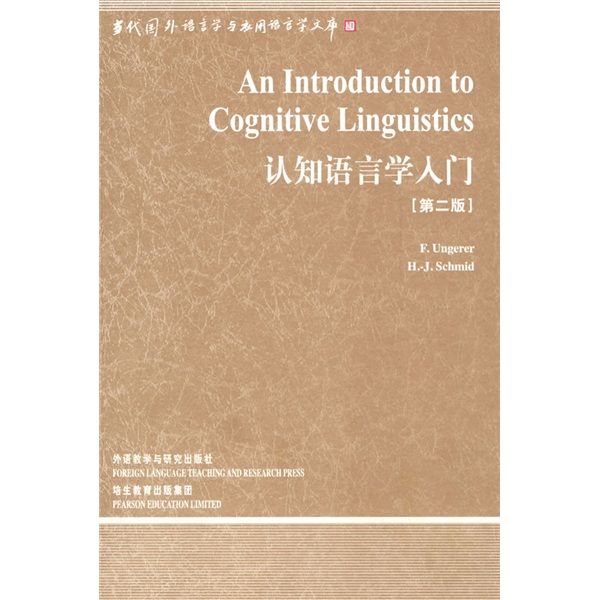《認知語言學入門(第二版)》是2008年10月培生教育出版集團、外語教學與研究出版社聯合出版的圖書,作者是[德]溫格瑞爾、[德]施密德。
基本介紹
- 中文名:認知語言學入門(第二版)
- 作者:[德]溫格瑞爾、[德]施密德
- 出版社:培生教育出版集團、外語教學與研究出版社
- 出版時間:2008年10月
- 頁數:384 頁
- 定價:38.9 元
- 開本:16 開
- 裝幀:平裝
- ISBN:9787560078649
內容簡介,圖書目錄,
內容簡介
《認知語言學入門》一版於1996年問世,成為當時國內外一本認知語言學教科書。在書中,兩位作者細緻入微地闡釋了認知語言學的核心概念,同時,又探討了在諸如象似性、辭彙變化、語法化和語言教學等研究中引入認知概念的種種益處。
此次第二版增加了構式語法理論、概念合成理論、關聯理論等內容,並對原來的內容進行了修訂,從而更全面地反映認知語言學研究近年的新成果,更好地適應不同讀者的需求,是語言學界不可多得的一本內容廣泛的認知語言學教科書。
圖書目錄
Publishers acknowledgements
Preface to the second edition
Typographical conventions
Introduction
1 Prototypes and categories
1.1 Colours,squares,birds and cups:early empirical research
into lexical categories
1.2 The internal structure of categories:prototypes,attributes,
family resemblances and gestalt
1.3 Context·dependence and cultural models
2 Levels of categorization
2.1 Basic level categories of organisms and concrete objects
2.2 Superordinate and subordinate categories
2.3 Conceptual hierarchies
2.4 Categorization and composite word forms
2.5 Basic level categories and basic experiences:actions,
events,properties,states and locations
3 Conceptual metaphors and metonymies
3.1 Metaphors and metonymies:from figures of speech to
conceptual systems
3.2 Metaphors,metonymies and the structure of emotion
categories
3.3 Metaphors as a way of thinking:examples from science
and politics
3.4 Thinking in metonymies:potential and limitations
4 Figure and ground
4.1 Figure and ground,trajector and landmark:
early research into prepositions
4.2 Figure,ground and two metaphors:a cognitive
explanation of simple clause patterns
4.3 Other types of prominence and cognitive processing
5 Frames and cOnstructions
5.1 Frames and scripts
5.2 Event-frames and the windowing of attention
5.3 Language-specific framing and its use in narrative texts
5.4 Construction Grammar
6 Blending and relevance
6.1 Metaphor,metonymy and conceptual blending
6.2 Conceptual blending in linguistic analysis and description
6.3 Conceptual blending in advertising texts,riddles and iokes
6.4 Relevance:a cognitive·pragmatic phenomenon
7 Other issues in cognitive linguistics
7.1 lconicity
7.2 Lexical change and prototypicality
7.3 Cognitive aspects of grammaticalization
7.4 Effects on foreign language teaching
Conclusion

